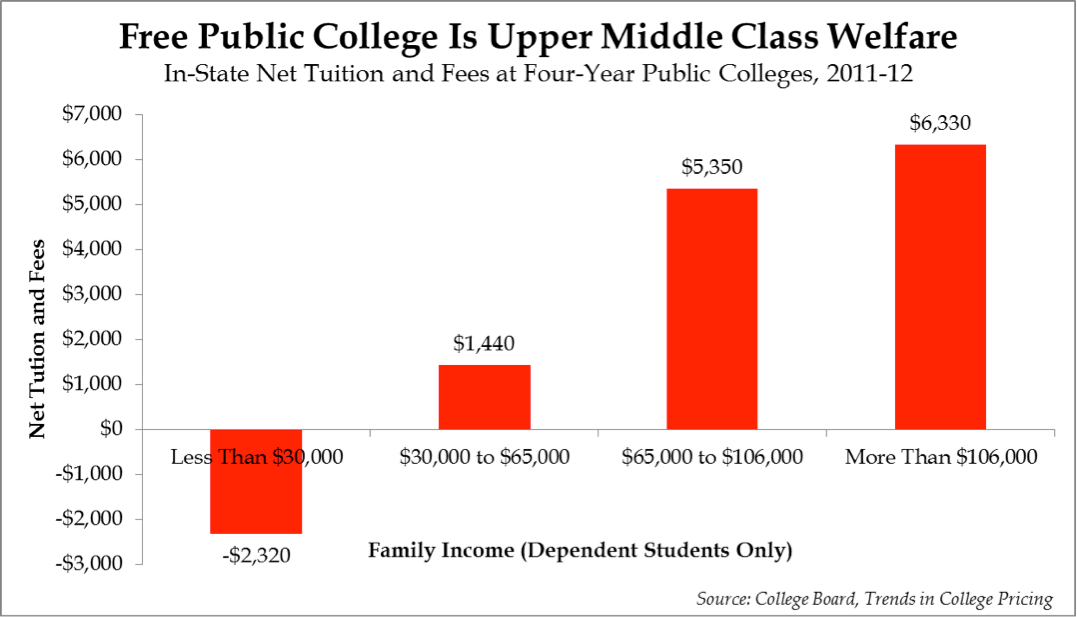Democrats may finally be waking up to the reality that free tuition at all public colleges and universities would be a giveaway to richer Americans who do not need help paying for higher education. Senator Tim Kaine, recently announced as Hillary Clinton’s running mate, admitted as much in a Quora Q&A several weeks ago. “By making all public university education free,” Kaine said, “we’d be giving away college education to richer Americans who don’t need the assistance paying for it.”
This is different from Senator Bernie Sanders, Clinton’s defeated rival for the Democratic nomination, who called for free tuition at all public institutions regardless of students’ incomes. Still, Sanders’ influence is evident in Clinton’s general election platform on higher education. The Democratic nominee is revising her original call for universal “debt-free” public college; she would now make tuition free at four-year public institutions for all students whose family incomes are less than $125,000 per year.
Related: Here’s Why Hillary Clinton Could Lose This Travesty of an Election
The plan is a giveaway to the upper-middle class, if not the rich. Despite the income limit, the benefits of this proposal would still accrue overwhelmingly to those with incomes between $65,000 and $125,000. This is because institutional aid and federal Pell Grants already substantially reduce the net tuition paid by lower-income students. According to College Board, students with family incomes between $30,000 and $65,000 pay yearly in-state tuition of just $1,440 at four-year public colleges—and students with family incomes below $30,000 pay no tuition at all.
 Students in the bottom family income quartile wouldn’t benefit at all from free tuition.
Students in the bottom family income quartile wouldn’t benefit at all from free tuition.
Since upper-middle class students will receive the greatest windfall from Clinton’s proposal, presumably it will be upper-middle class students who disproportionately move to public colleges. These students, who might have otherwise attended private schools, will occupy limited places at public colleges that might have otherwise gone to lower-income students with fewer opportunities. Ironically, Clinton’s plan to make college affordable might actually put it out of reach for many.
Or perhaps we will see the dream scenario: Clinton can convince public colleges to expand enrollment and make spots available to rich and poor students alike. In this case, we would expect a surge in enrollment from students of all income groups.
This article was published originally in Forbes by Preston Cooper, a contributor to Economics21.




